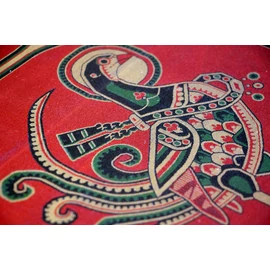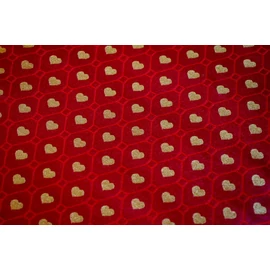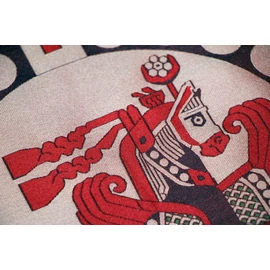Description
Our pattern reconstruction presents an elongated composition, repeated horizontally between the upper and lower narrow decorative bands. The central motif is a typical design of the Early and Late Medieval periods: the Tree of Life flanked by a pair of animals—in this case, birds. The framing bands are adorned with geometric motifs.
The textile is dated to the 6th or early 7th century. Its exact provenance is unknown; however, it shares notable similarities with silk fragments discovered in Lyon, Sens, and Antinoé. The pattern incorporates elements derived from Sassanid motifs, yet it can also be understood within the broader Mediterranean artistic tradition of Late Antiquity. It was most likely produced in the Mediterranean region, probably in Egypt or possibly in Syria.
The original textile belongs to the collection of the Cluny Museum, Paris (Musée national du Moyen Âge, Thermes hôtel de Cluny).
Project requested by: Julian Decker, IN TERRA VERITAS GmbH


Artwork: Balázs Szakonyi
Sources:
Sophie Desrosiers: Soieries et autres textiles de l'Antiquité au XVIe siècle [Catalogue du musée national du Moyen Âge, Thermes de Cluny]. Paris, Réunion des Musées Nationaux, 2004. p193-194
Kosuke Goto: The Jewelled Lotus: On the Sources of Ornamental Patterns Woven in Silk Samite. in: Indo-Asiatische Zeitschrift. Mitteilungen der Gesellschaft für indo-asiatische Kunst 19., 2015. Fig13a













